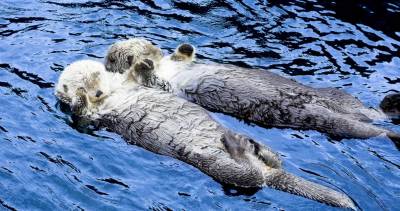Jennifer Lash: Searching for B.C.'s deep sea corals—and ways to protect them
By Jennifer Lash
The first time I went scuba diving in British Columbia I was astounded by the bright orange sponges, rich purple encrusting algae, and vibrant red soft corals I saw below the surface of the ocean. The brilliant colours and strange creatures dazzled my eyes and stole my heart.
Like every good adventurer, though, I was not content to walk on a trail when I could climb a mountain. Why hover at 30 metres below the surface when I could dive to 500 metres? It wasn’t the thrill of diving that deep that sparked my curiosity—it was the thrill of seeing the creatures that live so far out of sight that they are often out of mind. And so started my fascination with the deep sea, the different world on Earth that few people visit.
The ocean is a complex ecosystem, and we may never know about all the species that live there. Yet they touch our lives every day. The ocean creates the air we breathe, the rain that falls, provides us with food we eat, and supports marine industries that contribute to our nation’s economy. When I realized how important the creatures of the deep sea are to my daily life, my fascination grew into a dream, and I hoped that one day I would be able to learn more about them.
Scientifically, the term “deep sea” describes the region deeper than 1,000 metres that never sees the light of day. Above that, 100 to 1,000 metres, is the “twilight zone”. The twilight zone receives some sunlight but it is often too little to support photosynthesis. More commonly, the deep sea is used to describe both the twilight and the deep sea regions. Above 100 metres, sunlight supports the plants and animals that we have grown accustomed to seeing in aquariums, while scuba diving, and on our dinner plates.
Over the past decade, awareness of the deep sea has increased considerably. Once thought to be a lifeless environment due to the lack of sunlight, we now know that there are animals that use chemicals rather than light to produce the energy they need to survive, fish that light the way with bioluminescent lanterns on their heads, and brilliantly coloured corals.
Most of the research on deep sea corals in the northeast Pacific has been done in Alaska. These corals provide habitat and spawning grounds for many species including crabs, shrimp, and fish. Alaska’s research resulted in conservation groups and fishermen working together to protect these critically important corals. Soon afterwards, Washington state, Oregon, and California took significant steps to protect deep sea corals from the impacts of bottom trawling.
In B.C., the dearth of research has left our corals virtually unprotected and the health of our ecosystem vulnerable. Species such as red tree coral (Primnoa), bubblegum coral (Paragorgia) and bamboo coral (Isiidae) have been discovered off the coast of B.C. We know that deep sea corals exist because they are caught in the nets of fishing gear, particularly the groundfish bottom trawling gear.
That is why Living Oceans Society is launching the Finding Coral Expedition. On June 8, we will be leaving the pier in North Vancouver on the research vessel Cape Flattery with a team of scientist and two, one-man submarines.
We will be travelling past Vancouver Island to Queen Charlotte Strait, Hecate Strait, and Dixon Entrance, where we will be diving to depths of 500 metres, looking for the deep sea corals that are so important to our ocean ecosystem. We will be gathering information about the different species of corals, the marine creatures that depend on them and the types of habitats they live in. When we return at the end of June, we hope we can work with fishermen and government to find ways to protect the deep sea corals of B.C.
Jennifer Lash is the executive director of the Living Oceans Society. You will be able to see footage from the dives, read updates from the scientists, and follow the Finding Coral Expedition’s course on www.findingcoral.com/.















Comments